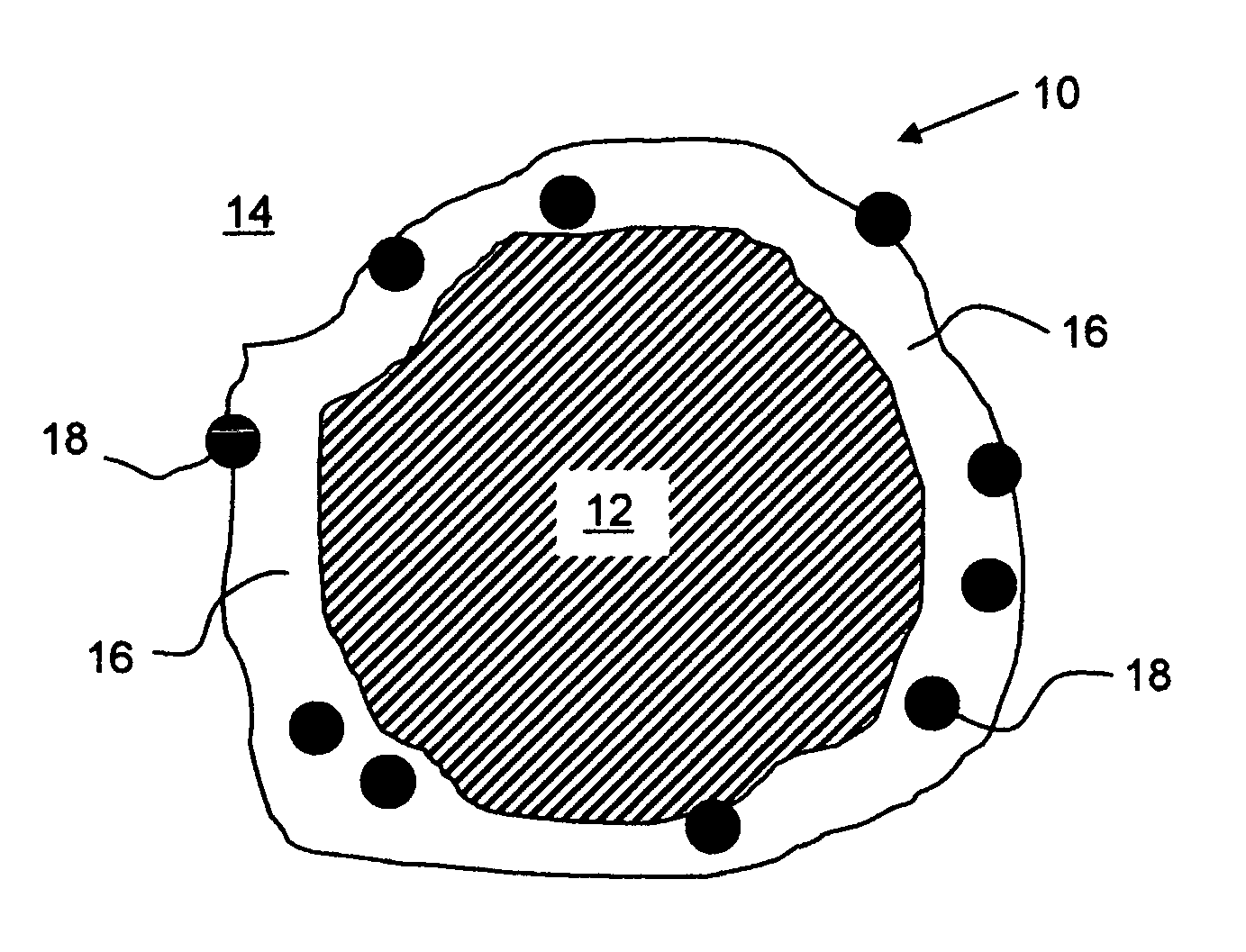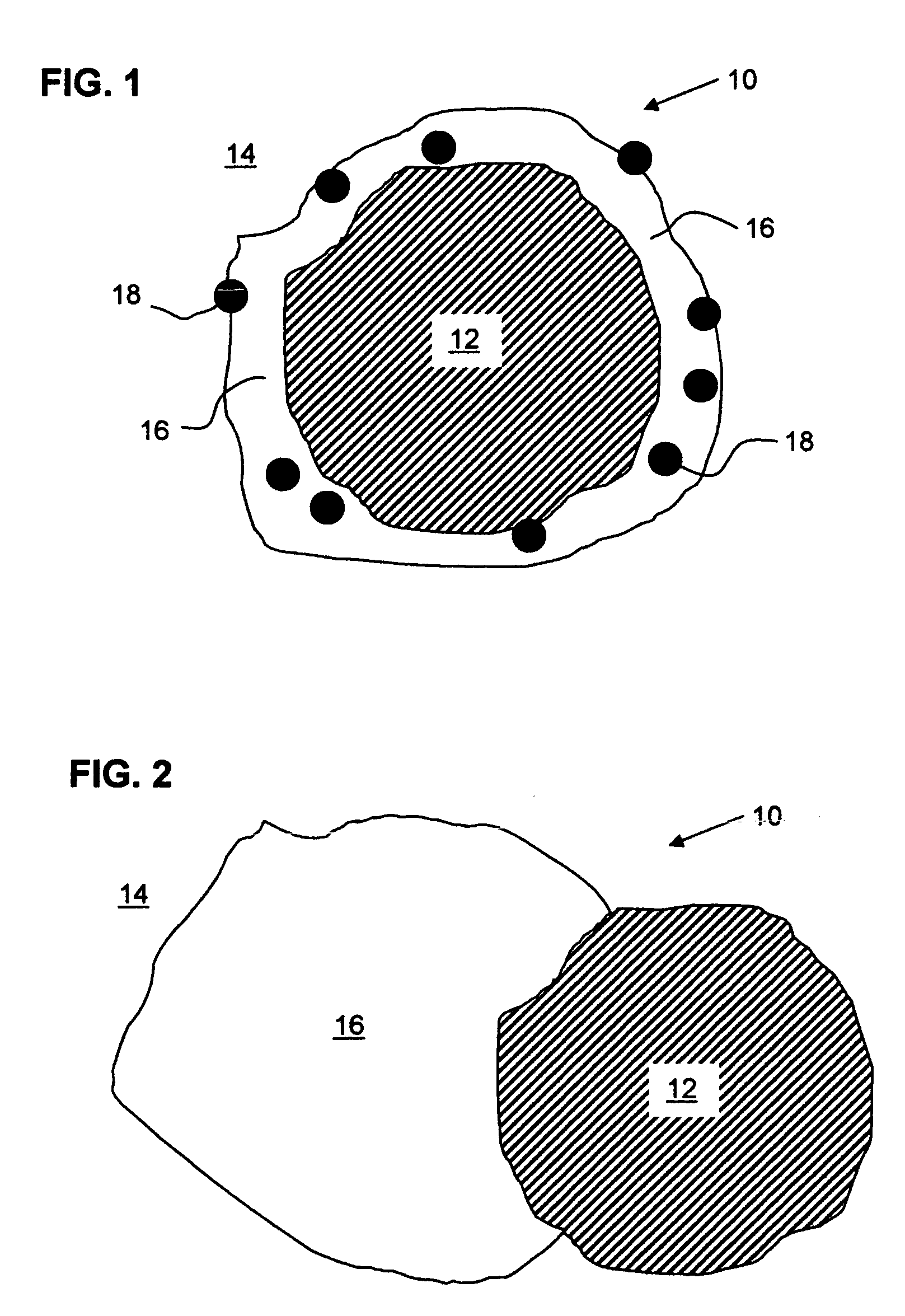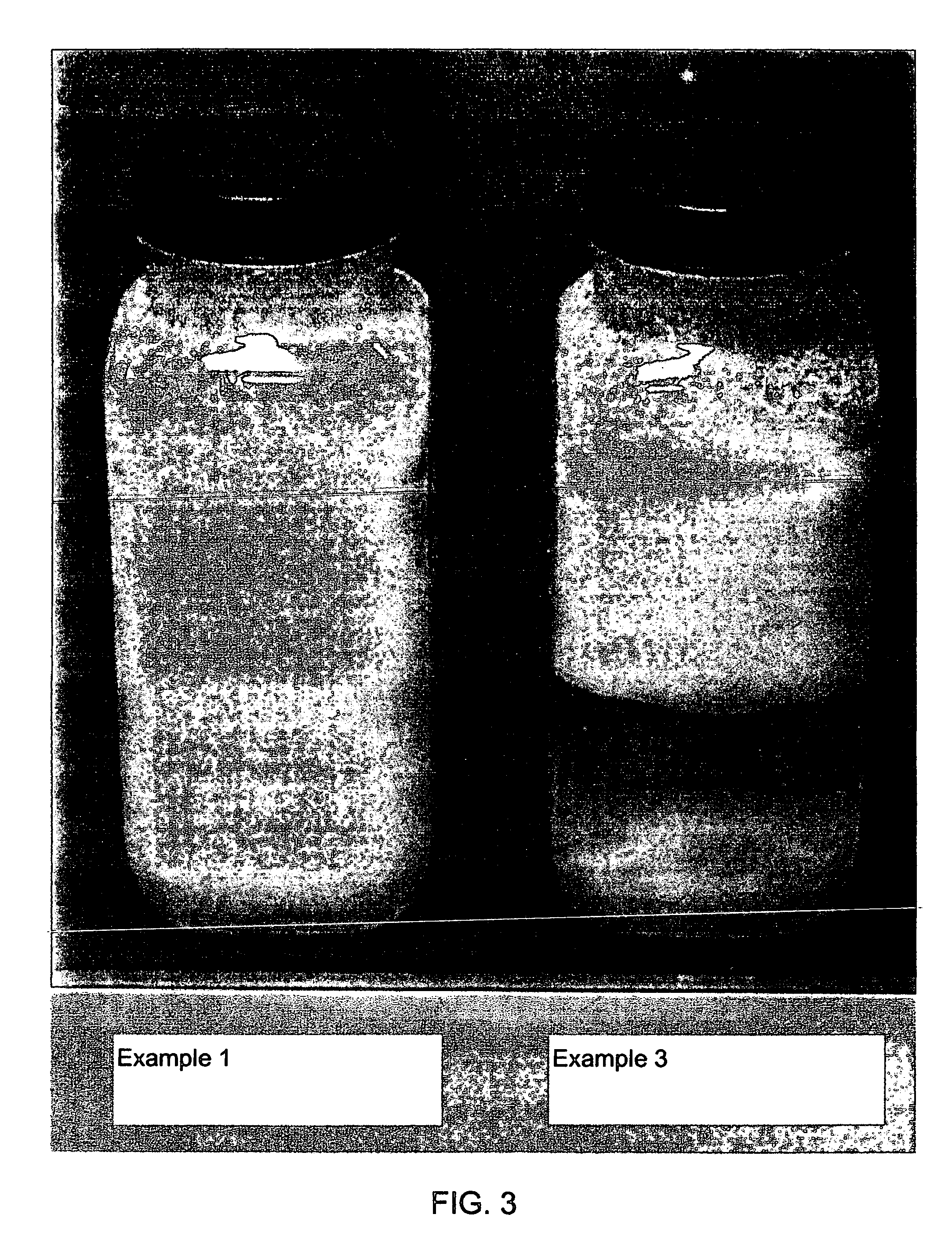Density-matched polymer slurries
a density-matched polymer and slurry technology, which is applied in the direction of papermaking, textiles and papermaking, polishing compositions, etc., can solve the problems of reducing the drag reduction efficiency of the polymer, the inability to place the pao in the hydrocarbon, and the specialized injection equipment of drag reducing gels
- Summary
- Abstract
- Description
- Claims
- Application Information
AI Technical Summary
Benefits of technology
Problems solved by technology
Method used
Image
Examples
example 1
[0035]A 2 g sample of Ritapeg 150DS (polyethylene oxide 150 distearate ester, or “wax,” from Rita Corporation) was added to 58 g Dowanol PnB (propylene glycol n-butyl ether, from Dow Chemical) and heated to 120° F. (49° C.) to dissolve the wax. Separately, 19.9 g of Microthene F (polyethylene copolymer, average particle size 25 μm, from Equistar) was added to 100 g Dowanol PnB. A 100 g quantity of precipitated polyalpha-olefin (PAO) polymer (as a wet cake containing residual glycol, stearate salts, etc.) was added to the Microthene slurry under high shear at ambient temperature. The shear was provided by a 1″ (2.54 cm) Cowels blade run at 2000 rpm for 5 min. The wax solution was added secondarily to the polymer slurry under high shear. The mixture was allowed to stand and cool to ambient temperature for one hour. The resulting slurry had a water-like viscosity and showed no signs of separation after sitting unagitated for 7 months. The slurry was observed to dissolve rapidly in hexa...
example 2
[0036]A similar preparation method as Example 1 was prepared with the omission of the Microthene (particulate) component. The resulting slurry was unstable and separated overnight, giving a clear lower phase with an opaque upper layer of PAO polymer.
example 3
[0037]The same preparation method as Example 1 was prepared with the omission of the Ritapeg 150 DS (wax) component. This slurry separated quickly giving a clear middle layer with a lower layer of white solids (Microthene) and an opaque upper layer of DRA polymer. Examples 1 and 3 are shown in the attached pictures of FIG. 3.
PUM
| Property | Measurement | Unit |
|---|---|---|
| temperature | aaaaa | aaaaa |
| mean particle diameter | aaaaa | aaaaa |
| temperature | aaaaa | aaaaa |
Abstract
Description
Claims
Application Information
 Login to View More
Login to View More - R&D
- Intellectual Property
- Life Sciences
- Materials
- Tech Scout
- Unparalleled Data Quality
- Higher Quality Content
- 60% Fewer Hallucinations
Browse by: Latest US Patents, China's latest patents, Technical Efficacy Thesaurus, Application Domain, Technology Topic, Popular Technical Reports.
© 2025 PatSnap. All rights reserved.Legal|Privacy policy|Modern Slavery Act Transparency Statement|Sitemap|About US| Contact US: help@patsnap.com



